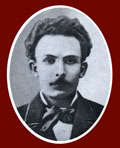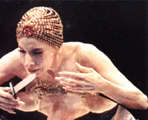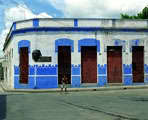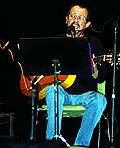The country’s cultural movement reveals
itself with a creative, dynamic and social force that assumes
Hispanic and African traditions to set modernity enriched
with universal and self-diversity. For that reason it is
difficult to outline briefly all personages that embrace
all expressions of culture and who at the same time have
national and international acknowledgement. Naming them
all could astonish.
The deepness of the thought of a 19th
century poet marked the whole future Cuban nation. Regarded
as the National Apostle, Jose Marti (1853-1895) defined
the main ethical features of our people, lightened the lyric
movement, continually supported the mambi rebellions and
established the more important civic and moral ideas of
the nation. As a poet his one of the starters of modernism
(Ismaelillo, Versos sencillos, Versos libres); his
epistolary is distinguished (Letters to his mother, Letters
from exile, Unfinished letter to Manuel Mercado); so
as his theatre plays (Abdala, Amor con amor se paga);
his one novel (Amistad Funesta) and different essays,
many of them read as speeches (Our America, New Pines,
Mother America).
Prima ballerina assoluta Alicia Alonso
(1921). On 1948 she founded the Alicia Alonso Ballet, first
professional company in the country, after the triumph of
the Revolution it became the National Ballet. Her whole
artistic career has been constantly enriching the techniques
and expressive values of ballet, placing Cuba among the
most important schools in the world. She is the principal
of the International Ballet Festival in Havana, which gathers
the leading companies and dancers of the world. All our
first dancers and choreographers have been her pupils.
Nicolas Guillen (1902-1989), National
Poet of Cuba, first President of the National Union of Artists
and Writers of Cuba. His poetry picks elements from African
culture. He dedicated his life to the revolutionary hopes,
left very important contributions to modern poetry and important
books as Elegy for Jesus Menendez, Motives of Son, Tengo,
Por el mar de las Antillas anda un barco de papel. The
work of this essential revolutionary poet is characterised
by elements as musicality, rhythm, research of the Cuban
roots, and other technical and formal features.














































